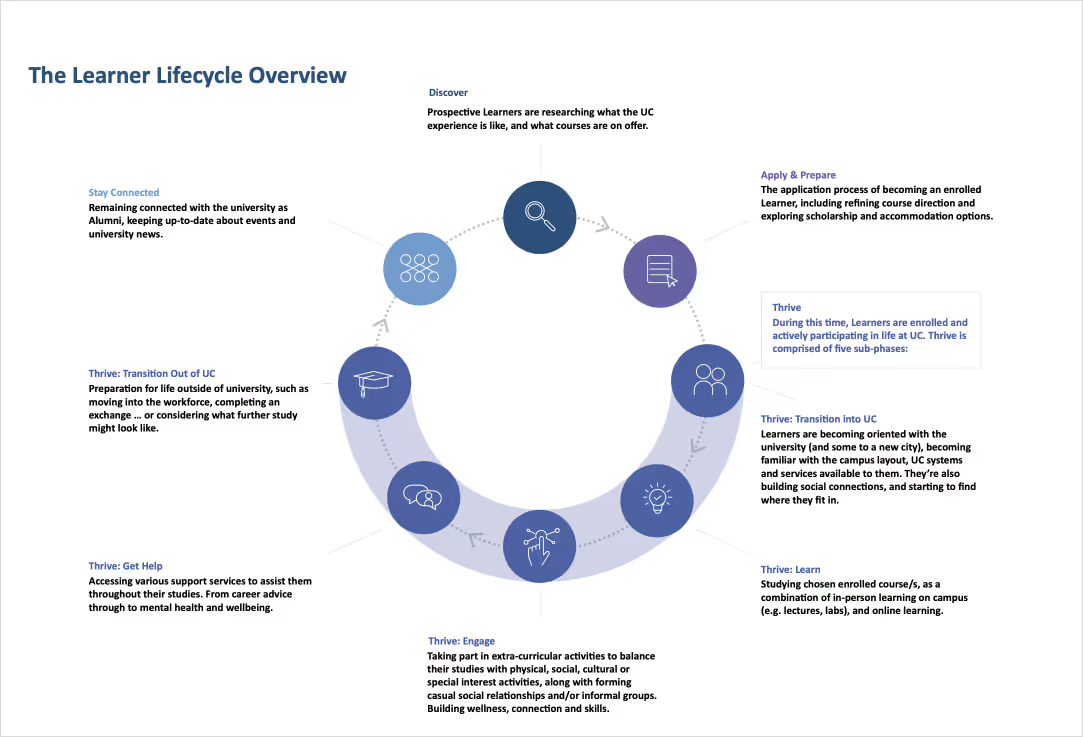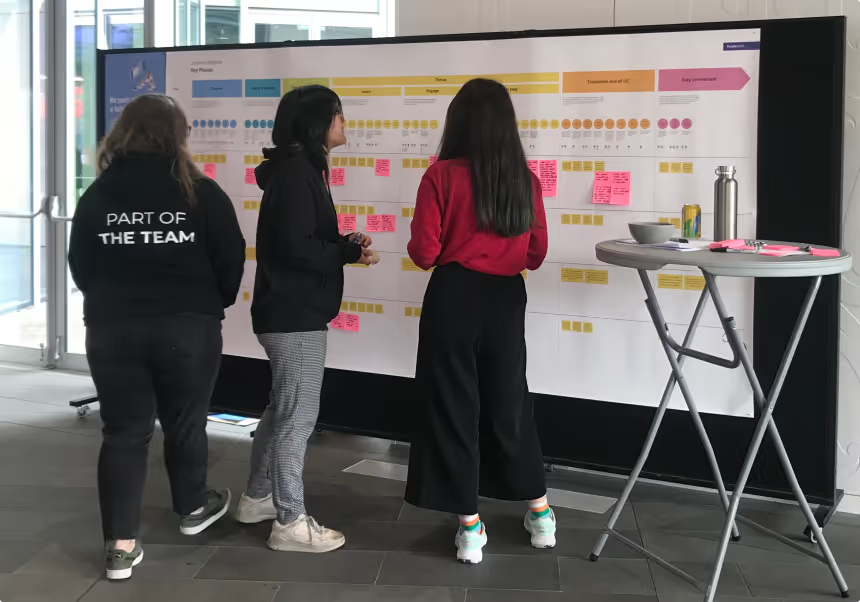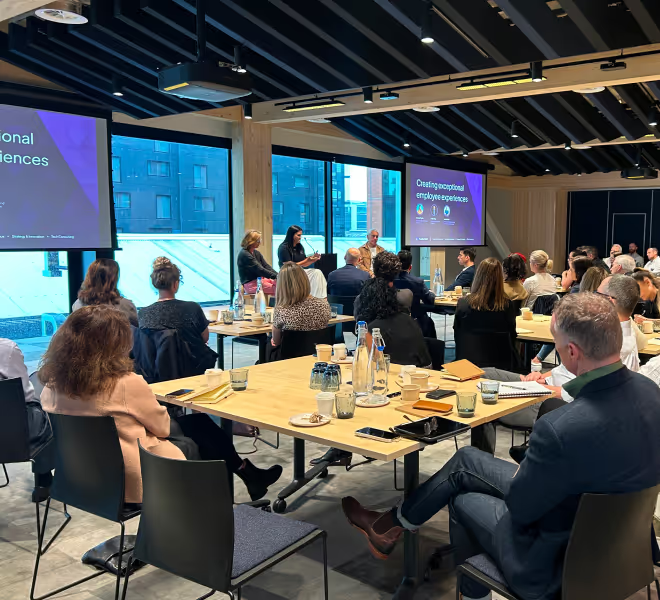Introduction
We’ve been talking to customer experience professionals and noticed a general sense of frustration with their ability to act on research insights, of which they have no shortage. This got us thinking about what might be preventing them from applying this abundance of research insights to the experiences they design for their customers.
To clarify the hunch we ran a (rather unscientific!) LinkedIn poll. It was clear that customer experience (CX) professionals are struggling to apply insights across their experiences. Most of them felt the reason for this was a lack of a coherent organisation-wide CX strategy.
A lack of a CX strategy is a thing we encounter time and again with our clients, and we enjoy helping people mature their strategic approach to CX. Read on to understand why a CX strategy helps you apply your research insights, and our tips on how to create an environment that supports people to use insights to improve all your experiences.
How a customer experience strategy helps you apply research insights
A CX strategy supports ongoing evolution of an organisation's customer-centric culture by galvanising teams around a shared understanding of the customer and the experiences the organisation is committed to delivering.
It's this shared understanding of the customer and future experiences that supports the application of research insight more broadly across an organisation. CX strategies help teams and individuals by providing a stable decision-making tool to:
- help prioritise initiatives, research efforts, and work
- highlight opportunities to validate and create.
Adopting a strategy and vision allows research insights to be put into action. When an organisation has committed to a strong strategy and vision, it has clarity on the experiences it aims to deliver, making any subsequent research easier to implement.
But wait…what is a customer experience strategy?
A CX strategy is a strategic framework guiding organisations to design their actions, policies, experiences and operations to deliver a consistent human-centred experience for its customers. CX strategies are developed through the combination of extensive customer research, and analysis of an organisation’s operational processes and strategic goals. These inputs combine to create a view of the customer experience with supporting models and frameworks to help teams develop a deep understanding of the needs of their customers.

The wonderful thing about CX strategies is that you never know what form they will take until you’ve synthesised all of your inputs. We tailor our CX strategies to meet the individual needs of each client and their customers. In saying that, there are some consistent components such as:
- vision: a statement representative of the future state experience - not a promise to your customers but the intent of your organisation to improve customer outcomes
- phased customer experience model: a representation of the customer journey showing the customers needs, pain points, opportunities and touchpoints they interact with
- experience principles or policies: guidelines to support the design of experiences
- behavioural segmentation of customers: a set of user types or modes that segment customers by behaviour not demographics
- opportunities: broad areas of opportunity that address deficiencies in the current experience or unmet customer needs
- assumptive roadmap: an assumptive programme of work that outlines how an organisation can move from current to future state often defined by initiatives within near-term, medium-term and long-term horizons.
Additional frameworks and models vary based on the organisation's context, customer needs, and strategic focus. For instance, a hospitality management software provider might develop a model on how prospects evaluate solutions. Or a university might define interaction types to help different departments recognise they all have similar interactions with students.
What can you do to create an environment primed to apply research insights
1. Develop a customer experience strategy (unsurprisingly!)
Predictably, the first step in this process is to develop your CX strategy. This gives you the leverage to use your insights towards creating better experiences for your customers. We know it’s not a trivial exercise! (That’s why we have a team of experts who support our clients in this.) It requires the commitment and coordination of resources and effort to build a deep understanding of your customers.
2. Don’t scare your leadership team
Work with your leadership team to secure support to act on insights. Don’t scare them off! You can start small, run pilots, demonstrate value and build momentum.
Partner with your product colleagues, get in and help them understand and use insights to inform their product roadmaps. You can help them recognise the role insights play in helping prioritise, and address the old adage of ‘just because we can doesn’t mean we should’.
3. Make it easy for people to use your work
Don’t be shy about sharing your valuable work and insights - if people don’t know it’s there, how can they use it?
If you improve access to research insights you create an environment where people can see and recognise the value of these. What this looks like for you depends on how your organisation works, but it usually needs a combination of storage, processes, and communication.
For example, some teams create a research repository linked to a customer experience model (storage). From there, they encourage teams to review research insights as they begin work on a specific customer challenge or opportunity (processes). Finally, they use internal comms channels - team meetings, Slack, newsletters, even an old-fashioned intranet - to share their work and its value (communication).
In summary
Successful customer-centric organisations don’t just accumulate research insights, they operationalise them.
As evident from our discussions with CX professionals a coherent and actionable customer experience strategy serves as a vital backbone for operationalising insights. It provides a structured framework, guiding teams to align their efforts with the organisation's broader vision. Without it, even the most insightful research can go unused, leading to missed opportunities for enhancement. By investing in the creation of a robust customer experience strategy and fostering an environment conducive to implementing research insights, organisations can ensure they're not just collecting data but translating it into tangible, customer-centric actions. By doing so, companies can navigate the path to delivering unparalleled experiences, deepening customer relationships, and achieving sustainable growth that competitors struggle to keep pace with.






